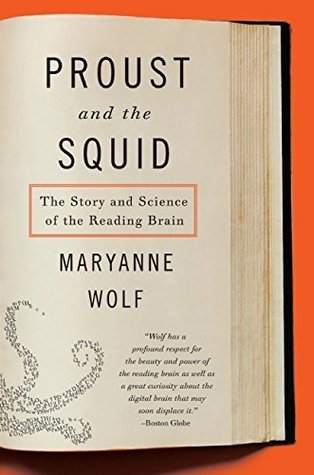More on this book
Community
Kindle Notes & Highlights
Read between
January 12 - January 24, 2020
neurons create new connections and pathways among themselves
we are what we read.”
Soon after birth, each neuron in the eye’s retina begins to correspond to a specific set of cells in the occipital lobes.
Reading is a neuronally and intellectually circuitous
Learning to read begins the first time an infant is held and read a story. How often this happens, or fails to happen, in the first five years of childhood turns out to be one of the best predictors of later reading.
the angular gyrus region become intensely activated during reading development.
as cultures die out, so, too, do languages.
Greek system (750 BCE) was the first to satisfy all conditions for a true alphabet,
reading in any language rearranges the length and breadth of the brain;
the act of putting spoken words and unspoken thoughts into written words releases and, in the process, changes the thoughts themselves.
As soon as an infant can sit on a caregiver’s lap, the child can learn to associate the act of reading with a sense of being loved.
intertwining of oral language, cognition, and written language makes early childhood one of the richest times for language growth.
The more myelin sheathes the axon, the faster the neuron can conduct its charge.
for most children myelination of the angular gyrus region was not sufficiently developed till school age—that is, between five and seven years.
the limbic system—the seat of our emotional life—and its connections to cognition.
the more effort something takes, the more the brain is activated,


